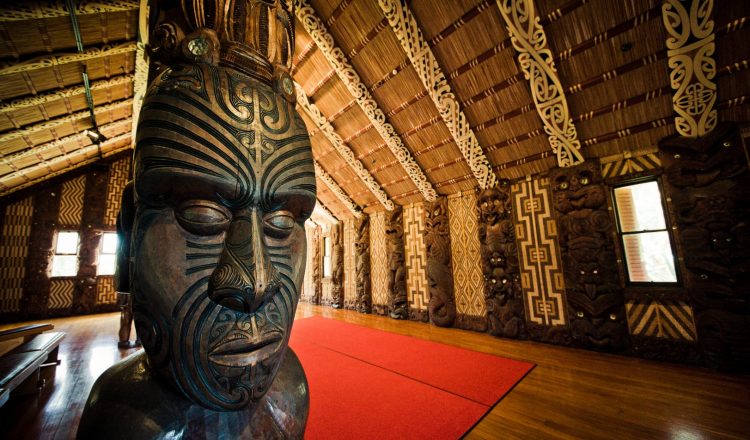New Zealand Vietnamese
New Zealand tiếng Anh hoặc tiếng Anh Kiwi (Một thuật ngữ tiếng lóng chúng tôi sẽ đề cập đến sau!) là ngôn ngữ được nói nhiều nhất trong ba ngôn ngữ chính thức của New Zealand. Hai ngôn ngữ còn lại là ngôn ngữ ký hiệu Maori và New Zealand. Giống như sự trang điểm văn hóa của đất nước, bài phát biểu của New Zealand là một lò luyện tập với những ảnh hưởng từ khắp nơi trên thế giới.
Các thành phần chính của tiếng Anh New Zealand xuất phát từ tiếng Anh Anh, với các yếu tố từ tiếng Scotland (Cụ thể ở Southlands), tiếng Ireland, tiếng Úc và thậm chí tiếng Anh Mỹ. Tuy nhiên, khi các nền văn hóa Bắc Âu và Maori ở New Zealand bắt đầu hợp nhất thành một bản sắc tập thể, dân tộc, một số từ vay mượn từ ngôn ngữ Maori đã bắt đầu xem sử dụng.
Từ mượn
Ngôn ngữ Maori hoặc Te Reo Maori được sử dụng rộng rãi để gọi tên các loài động thực vật phong phú được tìm thấy trên đảo. Một ví dụ đáng chú ý là chim Kiwi, loài chim nhỏ không biết bay đã trở thành biểu tượng quốc gia. Chim Kiwi là nguồn gốc của thuật ngữ tiếng lóng “Kiwi” có nghĩa là người New Zealand hoặc từ New Zealand. Từ cho vay trong tiếng Maori đang được sử dụng thường xuyên hơn bao giờ hết. Không phải để thay thế các đối tác tiếng Anh của họ, mà là để đa dạng hóa ngôn ngữ không ngừng phát triển của New Zealand.
Các từ vay Maori đáng chú ý khác sẽ là, “kai” (thực phẩm), iwi (bộ lạc), whanau (gia đình) và waka (một xuồng hoặc thuyền). Một ngôn ngữ thống trị, như tiếng Anh, hiếm khi vay mượn từ một ngôn ngữ ít chi phối hơn như tiếng Maori, nhưng ở New Zealand chắc chắn là trường hợp; và nó không chỉ từ ngôn ngữ Maori! Các thuật ngữ như “Gung ho” có nghĩa là quá nhiệt tình là từ những người định cư Trung Quốc, cùng với những từ khác như “Ketchup”. Thuật ngữ Scotland “wee” nghĩa nhỏ cũng đã được thông qua nhưng chủ yếu ở tỉnh Southlands.
Tiếng lóng Kiwi
Giống như ngôn ngữ anh em họ của nó, tiếng Anh Úc, tiếng Anh Kiwi có một cách tiếp cận hấp dẫn đối với các thuật ngữ tiếng lóng thường khiến những người không phải là người New Zealand vô cùng bối rối. Cách sử dụng tiếng lóng nặng nề này kết hợp với giọng Kiwi thậm chí có thể khiến những người nói tiếng Anh Anh phải vò đầu bứt tai.
Một ví dụ rất linh hoạt sẽ là thuật ngữ “chur”, từ này là một kết hợp của “Cheers” nghĩa là “cảm ơn” nhưng có thể được sử dụng để thể hiện sự đồng ý, cảm ơn, lời chào và lời chúc lành. Các ví dụ khác của kết hợp sẽ là từ “jandals” từ Kiwi cho flip-flops. Từ này kết hợp “Japanese” và “sandals” để mô tả phong cách giày dép.
“Sweet as” “Mint” và “Preemo” đều có nghĩa là “tốt” hoặc “không có vấn đề” với từ “as” thường được thêm vào để nhấn mạnh (“fast as” “mean as”).
New Zealand có nhiều khu vực nông thôn và gồ ghề khó tiếp cận. Một kiwi có thể gọi chúng là “wop wops” nghĩa là “ở giữa hư không”. Nguồn gốc của nó tương đối khó để theo dõi, nhưng nó có thể là một tham chiếu cũ đến mức độ khó để nói tên địa danh trong tiếng Maori hoặc các ngôn ngữ thổ dân Úc. Dù bằng cách nào, đó là một cụm từ tuyệt vời!
“She’ll be right” Là tiếng lóng cho “no problem” hoặc “It’ll be ok” và không cần bối cảnh nói về một người phụ nữ.
Do bản chất thoải mái, giản dị của Kiwi, bạn có thể nghe thấy mọi người gọi nhau là “Cuz” “Mate” hoặc “Bro”, nhưng bạn chỉ nên đặt nó cho bạn bè. Về mặt văn hóa, Kiwi thân thiện, chào đón có thể đấu tranh để nói với mọi người là không, điều này có thể giải thích lý do cho “Yeah Nah” loãng và không chắc chắn có nghĩa là “Không” và “Nah Yeah” nghĩa là “Có”. Tiếng lóng Kiwi kỳ lạ, nhưng độc đáo.

















































